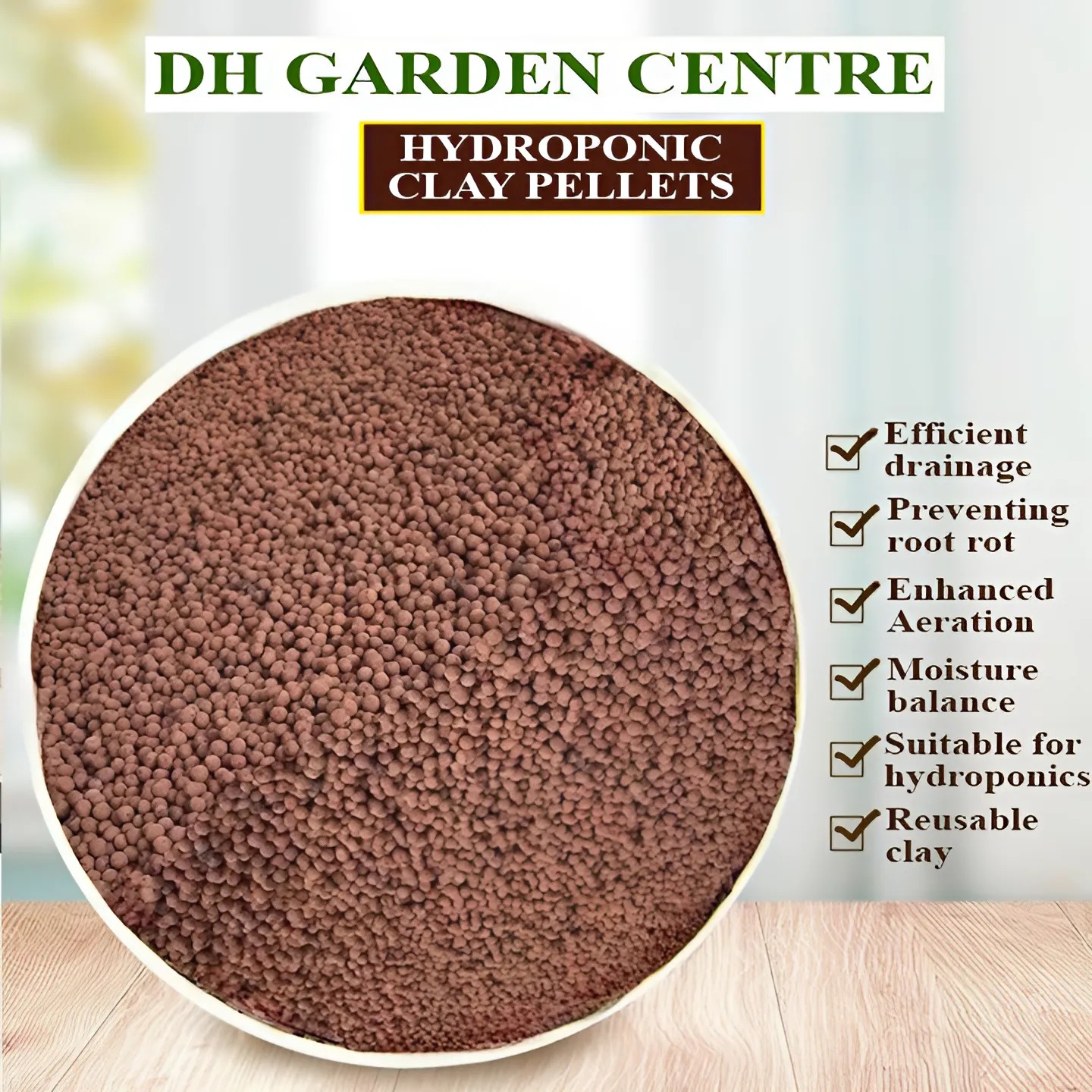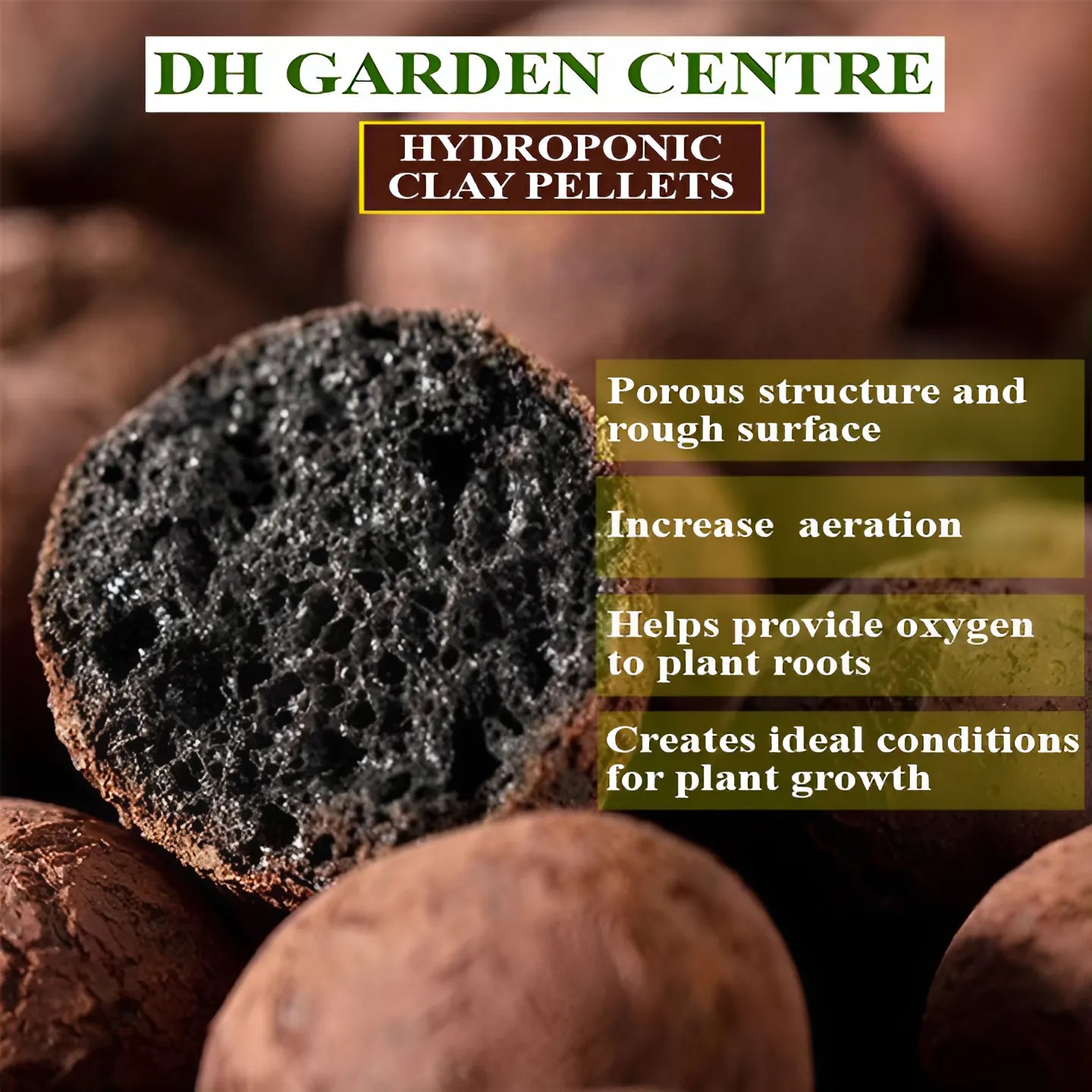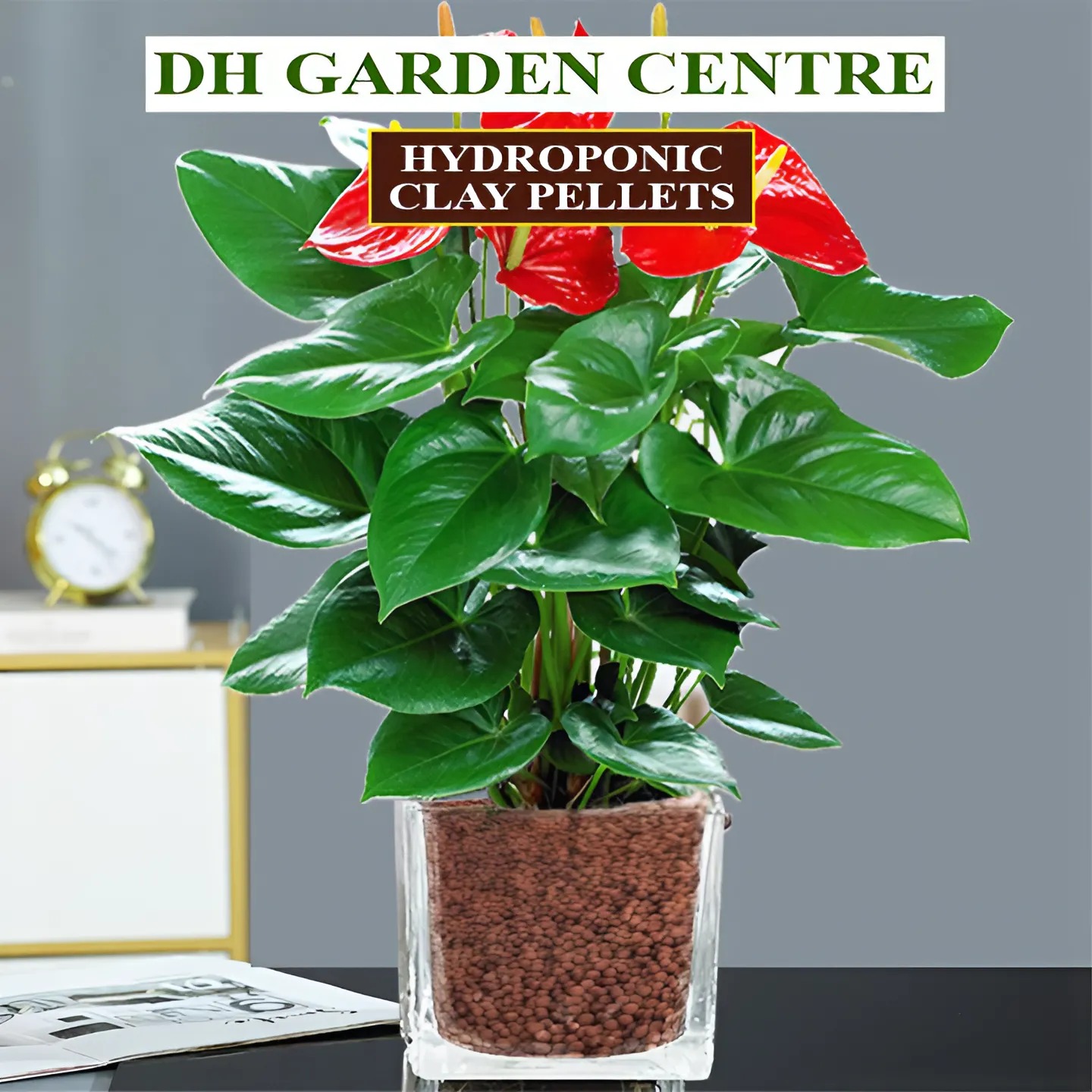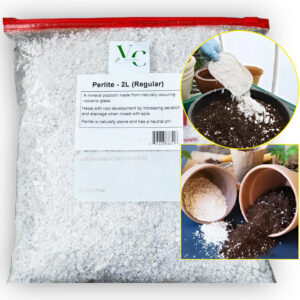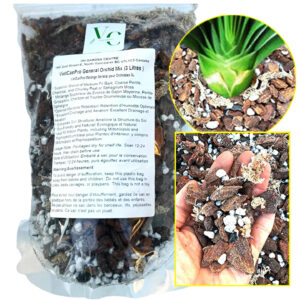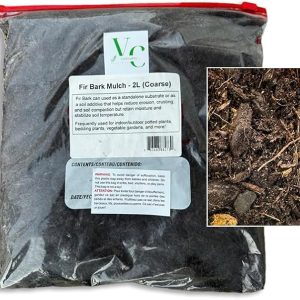Details
2L Hydroponic Clay Pellets are small, lightweight balls made from clay that have been heated at high temperatures until they expand, forming a porous structure. These pellets are widely used in hydroponic systems, semi-hydroponic growing, and as a soil amendment in traditional gardening.
Benefits of Hydroponic Clay Pellets
| Enhanced Aeration | The porous structure of the pellets ensures that plant roots have access to oxygen, which is essential for healthy growth. This helps prevent root suffocation, which can occur in poorly drained mediums. |
| Water Retention and Drainage | Clay pellets are ideal for balancing water retention and drainage. They can hold moisture and release it gradually while also allowing excess water to drain away easily, preventing overwatering and root rot. |
| Reusable and Long-Lasting | The pellets can be cleaned and reused for multiple planting cycles, making them a sustainable and cost-effective growing medium. They do not break down or degrade over time, maintaining their structure and effectiveness. |
| Clean and Low-Maintenance | Unlike soil, clay pellets are clean and do not harbor pests or pathogens. They are easy to handle, and plants grown in hydroponic setups with pellets typically require less maintenance than soil-grown plants. |
Key Features of Hydroponic Clay Pellets
| Porous and Lightweight | The heating process during manufacturing causes the clay pellets to expand, creating a porous structure that retains moisture while allowing for excellent aeration. |
| PH Neutral | Hydroponic clay pellets are pH neutral, meaning they won’t affect the pH balance of your water or growing medium, making them ideal for sensitive plants. |
| Excellent Drainage | The round shape and porosity of the pellets promote excellent drainage in hydroponic setups, preventing water from sitting around plant roots and causing rot. |
| Sterile and Inorganic | Since the pellets are made from clay and undergo high-temperature processing, they are sterile and free from pests, diseases, and organic matter that might harbor pathogens. |
| Reusable | The pellets do not decompose or break down over time, so they can be rinsed and reused in multiple growing cycles. |
Uses of Hydroponic Clay Pellets
| Hydroponic Systems | Clay pellets are commonly used in hydroponic setups, especially in systems like ebb and flow, drip systems, and deep water culture. They provide stable support for plant roots while allowing water and nutrients to flow freely around them. |
| Orchid Cultivation | Many orchid growers use clay pellets as part of their orchid potting mix because they provide excellent aeration and drainage, which are essential for healthy orchid roots. |
| Aquaponics | In aquaponic systems, clay pellets can serve as a medium for both plant roots and beneficial bacteria that help convert fish waste into nutrients for the plants. |
| Rooting Cuttings | Hydroponic clay pellets are an excellent medium for rooting cuttings. The loose structure allows roots to grow freely while maintaining the perfect balance of moisture and air. |
| Soil Amendment | When mixed with soil, the pellets improve drainage and aeration, preventing soil compaction. This is especially useful in heavy, clay-based soils or for plants that are sensitive to overwatering. |
| Indoor and Outdoor Planters | The pellets can be placed at the bottom of pots as a drainage layer or mixed into the soil to improve its structure and drainage properties. |
How to Use Hydroponic Clay Pellets
| In Hydroponic Systems | Fill the container with the pellets and place your plants’ roots in the medium. The pellets will provide support for the plants while allowing water and nutrients to reach the roots efficiently. |
| In Semi-Hydroponics | Add a layer of the clay pellets to the bottom of a container, then position the plant’s roots in the center and fill the rest of the pot with pellets. Water the plant by filling the bottom of the container with water and allowing the pellets to wick moisture up to the roots. |
| As a Soil Amendment: | Mix clay pellets with soil at a ratio of about 20-30% to improve drainage and aeration. This is ideal for plants that prefer well-drained soils, such as succulents and other houseplants. |
| Orchid Potting Mix | Combine clay pellets with other materials such as bark, sphagnum moss, or charcoal to create a well-draining potting mix tailored to your orchid’s needs. |
| Rooting Cuttings | Place cuttings in a container filled with pre-soaked clay pellets. Keep the pellets moist, and they will provide a supportive, well-aerated environment for new root growth. |
Related products
-5%
-5%
$21.75
This product has multiple variants. The options may be chosen on the product page
-5%
-5%
-5%
$19.99
This product has multiple variants. The options may be chosen on the product page
-5%



